South Pacific (1958)
“When all you care about is here, this is a good place to be.”
|
Synopsis: |
|
Genres, Themes, Actors, and Directors:
Review: With that said, many of the lyrics remain uncomfortably non-P.C., racy, and/or dated. Consider these lines from one of the opening tunes, “There Is Nothin’ Like a Dame”:
I was watching this sequence with my 13-year-old daughter and had to pause the recording to talk with her about women being objectified in this song, and how it reflects dated notions of what was considered acceptable at the time. Meanwhile, the notion of an exotic island (Bali Ha’i) where non-local men can have all their desires met will be distressing to more sensitized modern audiences: … and the following lyrics from “Bloody Mary” provide further evidence of how “othered” Pacific Islanders were at the time:
… though at least I was able to talk with my daughter about what a strong female-of-color Bloody Mary is, providing sustainable work for locals rather than forcing them to give in to exploitative wages by whites. On the other hand, Bloody Mary essentially marketing her beautiful, non-English-speaking daughter to Kerr may be pragmatic but is still deeply discomfiting: Back to “mere” sexism, “Honey Bun” — sung by Gaynor in a sailor suit to a crowd of horny sailors — is also quite racy and objectifying, though adults will be able to appreciate it within its context as wartime entertainment:
I remember catching snippets of South Pacific on television as a kid, but never fully engaging (which is odd, given my childhood love of beautifully colored musicals). Speaking of colors, even director Logan hated the use of too-obvious filters, which are distracting rather than enhancing: However, what was most interesting to me upon this adult revisit is how the theme of inter-racial romance is handled, with both Gaynor (as Nellie) and Kerr (as Lt. Cable) unable — at least initially — to move beyond their toxic xenophobia in the face of love. Lt. Cable tries to explain his feelings to Nellie:
Ultimately, South Pacific becomes a story about individuals overcoming their entrenched failings — racism, cowardice, lack of desire to support war efforts — and emerging slightly better than before, which isn’t a terrible moral to absorb. However, this film (and the play more broadly) must be viewed through a critical historicized lens in order to appreciate its highlights while wrestling with its many challenges. Notable Performances, Qualities, and Moments: Must See? Links: |
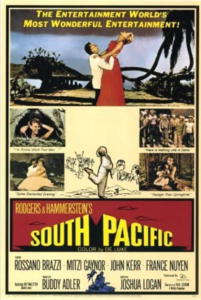

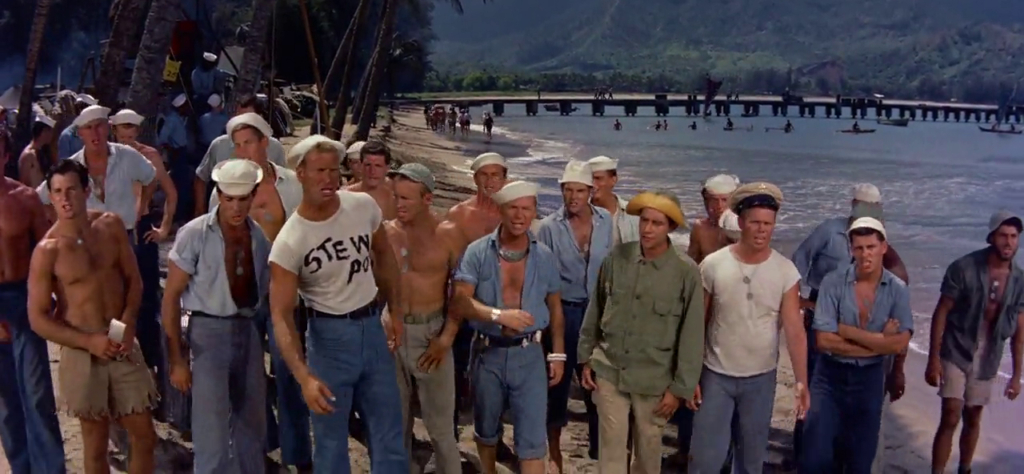
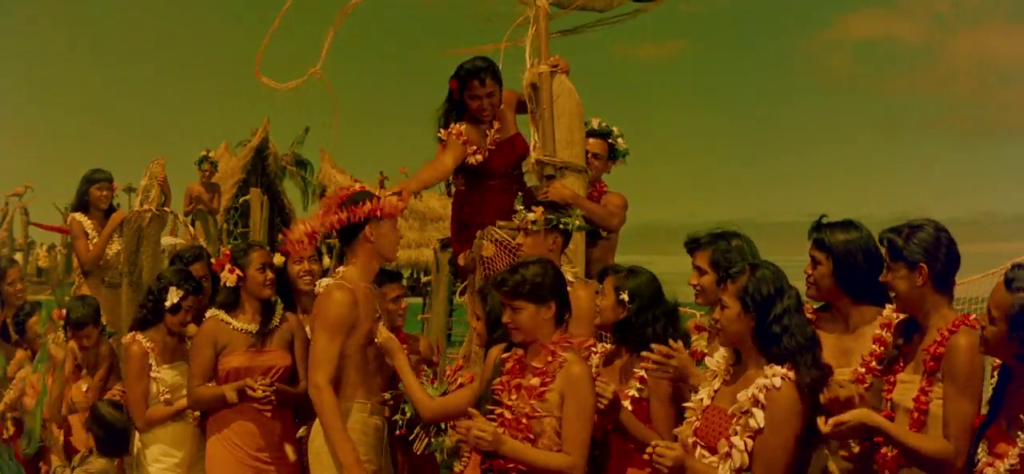
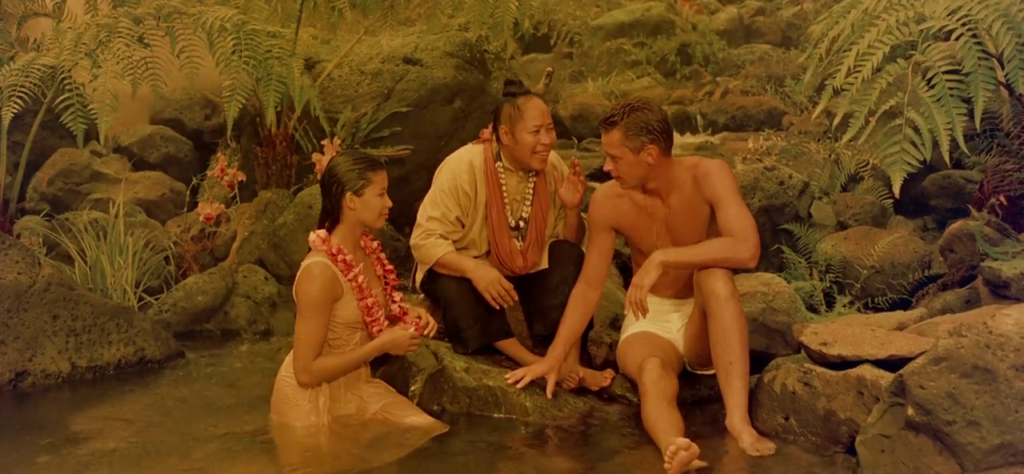
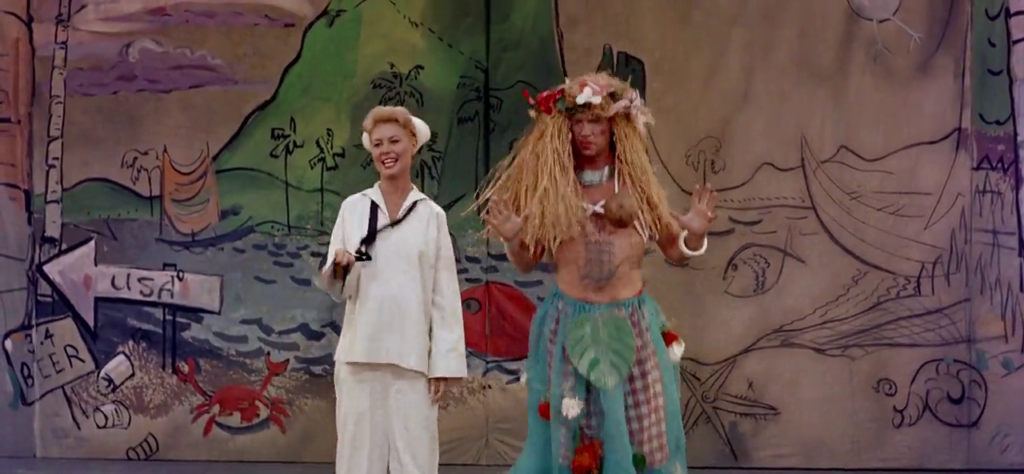
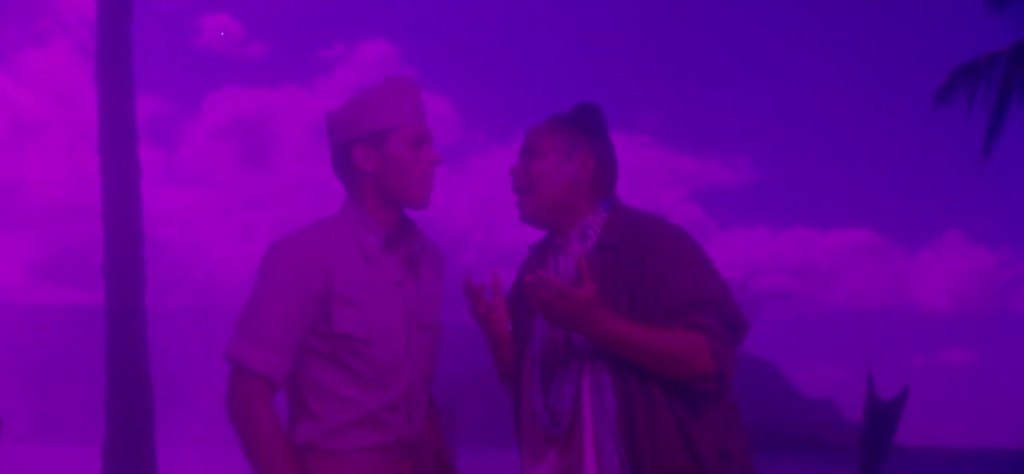


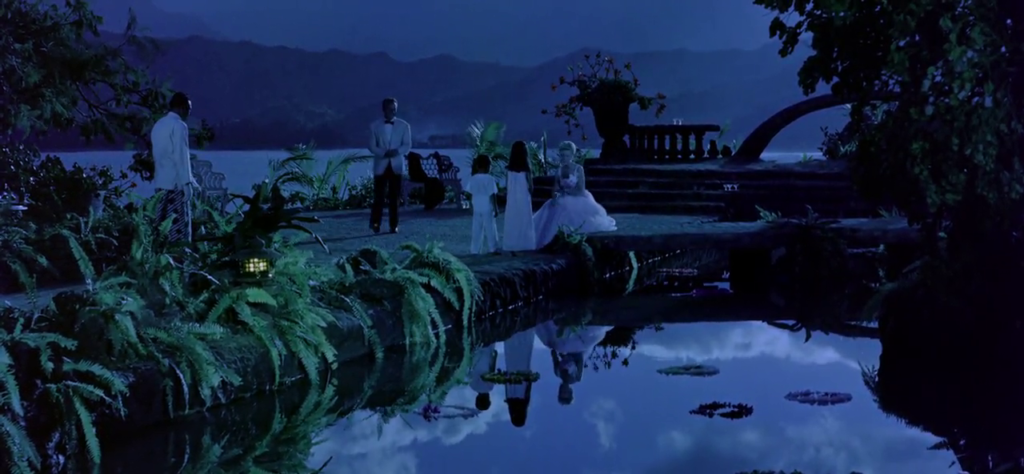
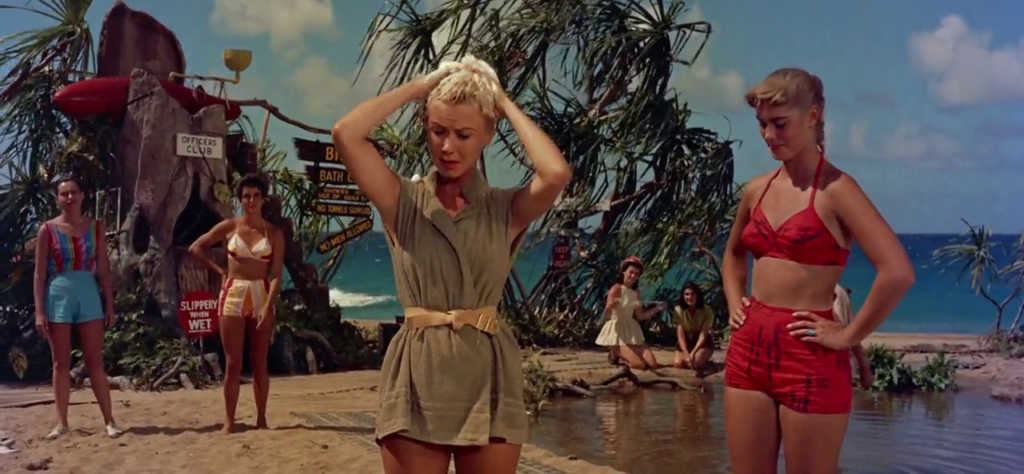
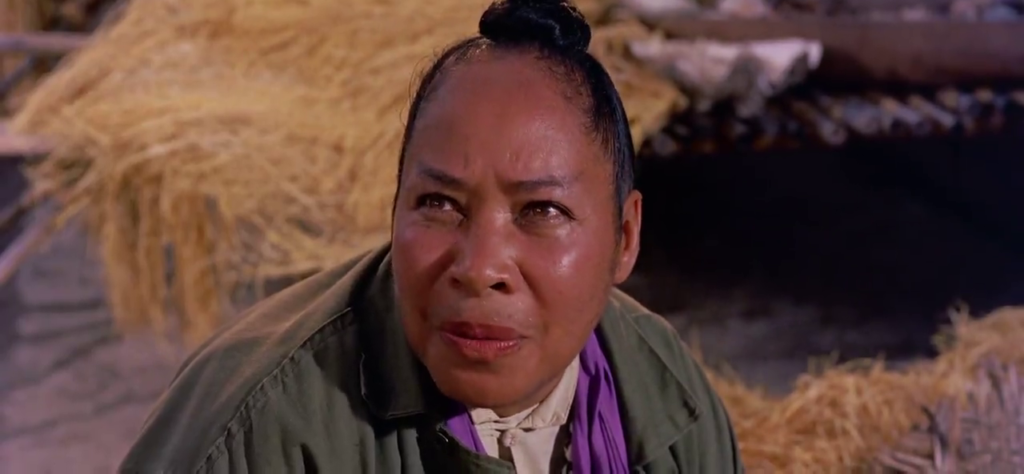
2 thoughts on “South Pacific (1958)”
Watched this last year …
Not must see.
South Pacific (1958)
⭐️⭐️⭐️
U certificate / 171 minutes
The romantic trials and tribulations of several US servicemen and a women a French expat and several islanders on an unspecified South Pacific island circa 1942.
Beloved, lavish film adaptation of the 1949 Rogers & Hammerstein musical directed by Joshua Logan who also co-wrote the stage production. I found that considering it’s length there’s not much to this story that couldn’t be told in a standard 90 minute ‘B’ WWII flick. The dramatics are pure melodrama albeit very well played and the songs and score are classics of their kind.
The war backdrop really doesn’t kick in till the last quarter and the action towards the end of that, so it all depends on how much one likes classic Hollywood and stage musicals as to how much one can take. For me, I don’t mind these kind of entertainments and I liked the slow pace, framed proscenium arch style of film making that allows the cast and locations to shine.
God help us if the long touted remake ever gets off the ground because modern film makers will digitally fuck with the grade and edit the hell out of the piece. This kind of deliberately paced widescreen roadshow flick is best seen on the biggest possible screen and these days even the biggest conventional cinema screens are too small … only in it’s native 70mm on an IMAX screen will do it justice. It’s stunningly shot with controversial use of colour filters to accentuate the emotions that I loved.
It’s a languorous, sensuously shot romantic film; essentially a rom-com although the humour is largely relegated to the first three quarters and the characters of Seabee Luther Billis (Ray Walston) and islander Bloody Mary (Juanita Hall); both of whom walk away with the film for me. As for the music; like all musicals, the songs drags the story out but chances are that’s why anyone would watch it so won’t mind. For me, it’s the perfect film to have on in the background.
The perfect bank holiday film.
Not must-see, though fans of movie musicals will, no doubt, want to catch it.